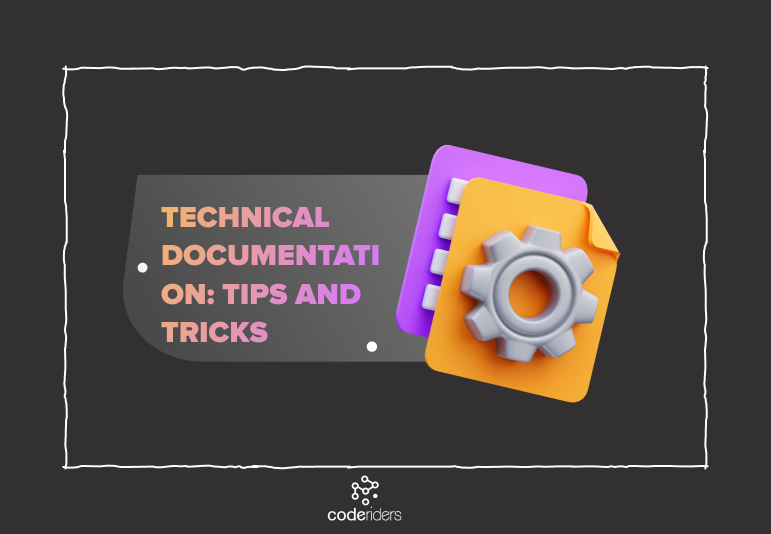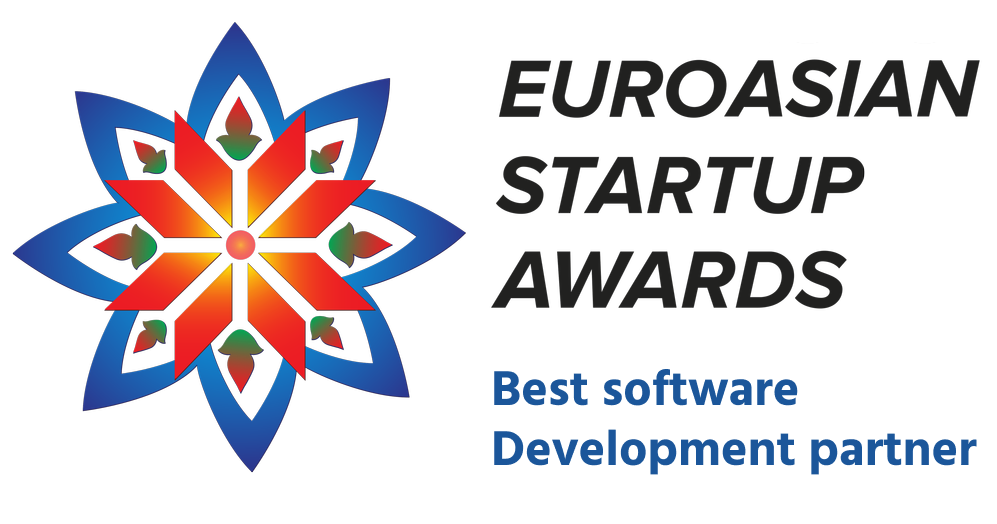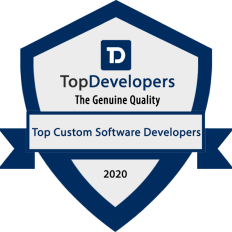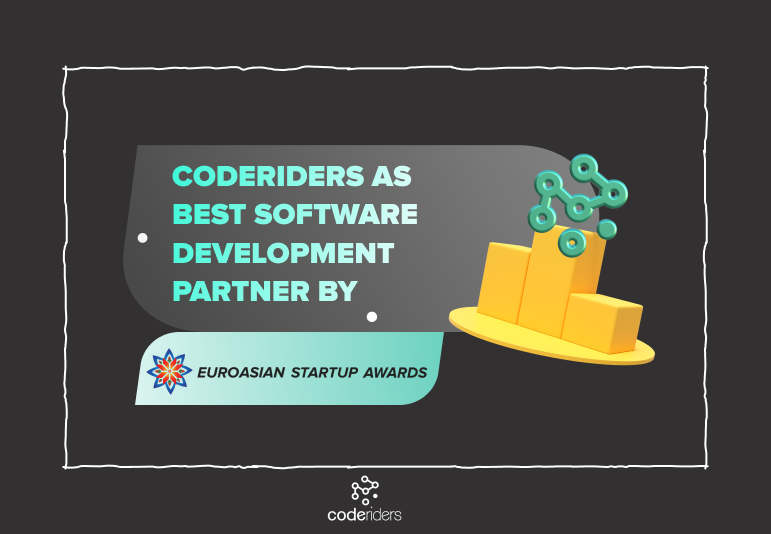Businesses need technical support. It doesn’t matter if you own a company in retail, wholesale, education, finance, health and wellness, or any other industry - to scale high and be competitive you should have a respectable digital appearance.
In today’s virtual world software development solutions are one of the most required services. The process seems very easy. You have the idea, hire the developers, and that’s it. However, unfortunately, software developers aren’t magicians, and to get your desired solution, you should hold productive communication with the software development team.
Cooperating with software developers or the team doesn’t necessarily mean that you should have a lot of technical knowledge in the field. The thing is to find the right way to explain what you’re exactly expecting to get at the end of the project. One of the best options for getting your desired product is by writing a Technical Specification Document beforehand. This means a comprehensive technical requirement document written at the beginning of the project for IT employees, teams and, stakeholders. The main function of it is to inform and educate stakeholders on business requirements, internal standards, and best practices. This will help you organize the project in a way that is simple and easily accomplished by the software development team in a short amount of time.
The technical specification document - often called a technical spec, a tech spec, a technical requirement document, or software requirements specification (SRS) - can be written by the project manager, an individual professional, or by the stakeholder himself. In either way, the person responsible for writing a technical specification document should have good writing skills and preferably some basic understanding of the coding process.
free white paper
how to write a solid scope of work sow
This article is for entrepreneurs, business leaders, or owners that want new software solutions but don’t have a clue about the software development lifecycle (SDLC) and technical requirement list.

Technical Specification Document (TSD) vs Technical Document (TD)
Technical Specification Document (TSD) is often confused with Technical Document (TD), which is more popular among IT employees and stakeholders. There is a little difference between these two. Technical Spec Document is a simpler and comprehensive document written at the beginning of the project for IT employees, teams, and stakeholders. The main function of it is to inform and educate stakeholders on business requirements, internal standards, and best practices as well as to define the requirements for the project, product, or system. Technical specs are often referred to as engineering design, technical design, or software design documents.
On the other hand, Technical Documentation (TD) is a complicated and ongoing process that describes handling, architecture, and functionality of a technical product or a product that is already in use and is being updated. TD is created for end-users, administrators, service, and product technicians. TD usually includes Technical Specs.
Both documents can be written by either a skilled employee at a software development company or an engineer who’s supposed to build the solution and be the point person during the implementation. However, for the larger projects technical writers, lead software engineers, project leads are taking the responsibility.
Subscribe to Newsletters
Why is Technical Spec so Important?
The technical specification document is a very customized document according to a specific company’s needs and working strategy. A well-written and successful technical requirement document serves as a great guide for measuring the success and the ROI (Return on Investment). There are many benefits you will gain if you devote your time to write a candid technical requirements specification:
- Stakeholders get the product in a shorter period and pay less money.
- The entire software development process is under control. Co-operation between the developers and other team members, such as project managers, QA professionals, etc. is more transparent.
- The developers know exactly what they should do other than their tasks especially if the team is big. They understand the purpose of their job and have the skeleton of the whole project.
- It’s easy for newcomers to cope with the development process and adapt to the project.
- The risks of failing the process are at a minimum. As your requirements are precisely pointed in the technical specification document.
- Substantive work by the developers or individual approaches to the product or project is reduced as each employee goes with the plan. There are specific goals pointed out that should be achieved in various stages of the process. Consequently, you avoid time loss.
However, besides having a well-written Technical Spec, it’s also very crucial for IT teams or companies to have a well-organized software development process. We at CodeRiders have already adopted our own paradigm of successful projects which is simple.

We work retrospectively depending on the type of co-operation. Project-based engagement model is among one of our strategies of effective partnership. If the client prefers this engagement model, having technical documentation and a detailed plan of the project is very important. This ultimately makes time estimate much shorter and the project cost much cheaper.
Things to Do Before Writing a Technical Requirement Document
- Get a collaborative Technical documentation template that all of your team members have access to. There are tons of them on the internet, just search for ''Technical Spec template'' on Google and choose the most relatable one to your project. Some of the free technical documentation templates can be found here.
- Get all the information on the product requirements by the stakeholder. Transfer this information in the existing domain and get a thorough understanding of every feature/functionality.
- Come out with the problem in detail and start brainstorming. Segregate all the possible solutions that come to your mind and pick up the most reasonable one.
- Co-operate with developers involved in the project. Ask one of the most acknowledged software developers to have a look at the problem and your suggested solution. Discuss the issues related to the problem and gather the developer's feedback.
- Block time and deadlines on your calendar and start writing the first draft of your Technical Spec.
Before writing a technical requirement list, keep in mind that your document should be easy to read. This way your ideas will be understood clearly. A few tips to using a straightforward language and structure are:
- Write your sentences simply and shortly,
- Avoid long paragraphs,
- Use bullet points and number lists when possible,
- Be consistent in terms throughout the document
The Structure of the Technical Spec Doc
The technical spec is made to ease the software development process and make it less complicated. Thus, having the right structure is very crucial. A well-written technical specification document is clear for all parties involved – both stakeholders and the software development team. The structure of the technical documentation is based on our experience at CodeRiders. We tried to include the most important ones that worked well with our partners from various industries and backgrounds such as, retail and wholesale, education, finance, health and wellness, entertainment, and so on. Thus, you’re free to customize the technical requirement doc structure according to your business needs.

Header
The header is the very beginning of your technical spec. It should include the project name, the created and the last updated dates, the author’s name, the names of the team members, and their roles in the software development process. It’s also desirable to have a table of content as the technical requirement specification is a long document, and a table of content makes the navigation process easier.
Introduction
Each document should have an introduction regardless it's an essay, an article, or a technical requirement document. The first point of introduction in Technical Spec usually includes the overview and summary of the problem. The future users' concerns or reviews are also important along with the context and the suggested solution.
The background of the problem should clearly state the importance of the problem, its origin, its impact on users, and company goals. It’s desirable to also describe the experience in solving the problem, the role of the solution in the product road map, technical strategy, and more.
Product description
The characteristics, features, functionalities of the product that give a precise description of its appearance, components, and capabilities. Other crucial assets in the product description are:
- Set of benefits for the software’s end-users, as well as for the employees of the corresponding company.
- End-users’ roles and access descriptions, as the program or software may function differently e.g. for the customer care employees, marketing team, general manager, and so on.
- Business logic should be included to show flowcharts, error states, and conditions that lead to errors, API changes, limitations, and so on.
- External components that the solutions will interact with such as API (Application Programming Interface) integrations, which are used to deliver your request to the provider and then send the response back to you.
- UI/UX changes, and links to the designer’s work, mobile and web concerns, wireframes with descriptions, UI states, and error handlings.
Providing design mock-ups, diagrams, graphs, screenshots are always appreciated as they make the whole document more vivid and easy to understand than only textual ones.
User personas and user stories
User personas are important for the developers as besides knowing the whole scope of the project they also should have a clue on whom it’s targeted for. User stories are the ultimate continuation of the user personas. Once you know whom the software is targeted for, your next step is to find out customers’ needs and possible behavior.
Non-goals or simple requirements not needed in the project
This section is important as it will cut out the time spent on fixing misunderstandings between the stakeholders and the software development team. By writing down some attributes that you think will not help to solve your problem, you ensure that they won’t be included in the process as a result of failed communication. Hence, no additional time will be spent on unnecessary tasks.
Your goal description maybe something like this – “The software should help my employees have an internal and secure inventory to transfer all the necessary data”.
An example of a possible non-goal description maybe – “My software should not include data editing possibility for all the employees”.

Terminology and assumptions
By writing down glossary and terminology, you make sure that there won’t be any obscure and confusing terms for either stakeholders or developers. On the other hand, assumptions are all the required resources that should be accessible for the completion of the product or project.
Technologies
If there is a preferred stack of technologies for this project, mention them within a separate section as well.
Work estimates, timelines, milestones
Estimations are crucial factors for the whole task organization and a collective, clear project. Milestones make time management easier as they include dated checkpoints for the completion of significant tasks.
Test plan, monitoring, and deployment plan.
Describe how you plan to conduct the test plan, and monitor the work done. There should be clear descriptions of acceptance criteria, as well as the deployment plan.
Q&A
Writing a Technical specification document and missing out the discussion and open questions section is pointless. There will always be some elements, minor mimics of the solution that not all of the team members agree on. A chance for a healthy debate strengthens team spirit and the urge of coming out with a consensus. Discussion is followed by questions addressing the uncertain points to the appropriate person, which can be a stakeholder, team member, or someone else.
References
Like every other document, technical requirement specification should also have a closing, which means including references, links to documents, and resources. The final part should also include acknowledgments, which are credit people who had contributions to the whole technical specification document.
These are the most common and widely used perspectives and assets for writing a successful Technical Specification Document. A skilled technical writer or a person responsible for writing a technical requirement list uses these core points and adopts them to specific companies’ perspectives and assets.
Download our present for our loyal readers like you.
free white paper
how to write a solid scope of work sow
It's hard to tell an exact deadline for professional writers or stakeholders to complete Technical Specs as it's highly subjective. The draft documents usually go under a lot of modifications before coming out with the final one. The writing process may sometimes seem complicated especially when it comes to technical knowledge. So, we at CodeRiders are always ready to help you through the process or give advice. Don’t hesitate to contact us if you need some consultation.
After all, the whole purpose of Technical documentation is having a well-prepared team and a successful project implementation. So, it’s worth spending some time exploring simple and easy ways to avoid hardships during the software development life cycle and to make sure your final version of the Technical Specification Document is highly useful.
Having
development
needs?
CodeRiders will address your web and mobile development challenges by creating custom software, helping with outsourcing services, or just consulting on your software development requirements.














